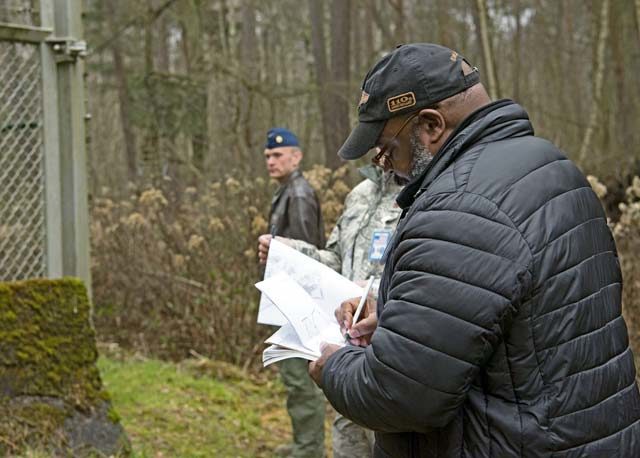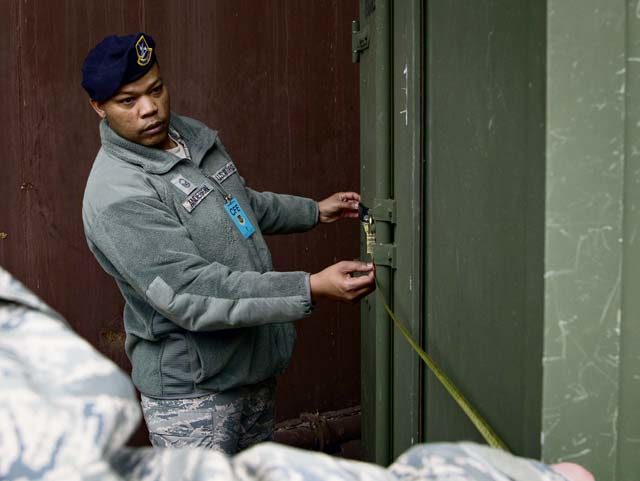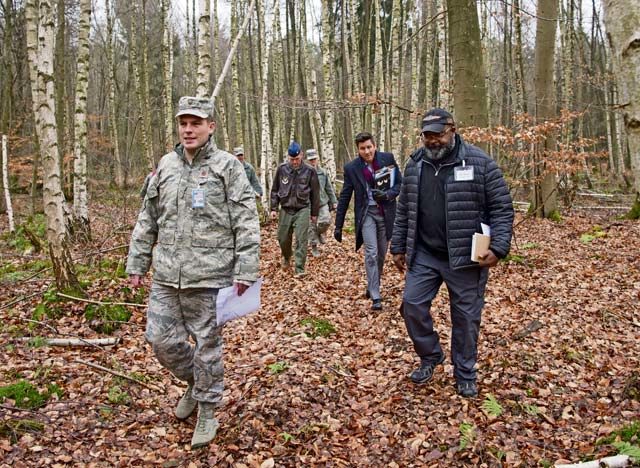
At any moment, any of 30 countries can announce that they are giving 36 hours’ notice before inspecting Ramstein. The 30 countries are Treaty of Conventional Armed Forces in Europe signatories, which was created to control the number of combat capabilities such as combat aircraft in Europe. To prepare for such an inspection, Ramstein conducted a CFE inspection exercise Dec. 6.
After the cold war, tensions lingered between the Eastern Bloc and NATO. Opposing countries amassed enough combat capabilities to annihilate each other. In order to prevent annihilation, countries signed the CFE treaty, which limited the number of combat capabilities allowed in Europe. Those capabilities include combat aircraft, attack helicopters, armored combat vehicles, artillery, and battle tanks.
“The treaty reduces resources and promotes openness,” said Michael Taylor, U.S. Air Forces in Europe Armed Control and Counter Proliferation treaty compliance officer. “Everyone knows what everyone has. I think Europe is safe because of it.”
Taylor explained that signatory nations also established other measures to promote openness and stability. The Vienna Document allows countries to visit each other, and the Open Skies treaty allows nations to fly over each other and take photos. Together, the treaties continue to promote stability.
After the CFE treaty was established, Taylor explained, both sides of the war scaled back a great number of war assets. Each participating country also reports the number of assets they have annually to a central database. To ensure countries report honestly, they inspect each other, such as Ukraine’s inspection of Ramstein in 2012. The treaty requires inspectors to give a minimum of 36 hours’ notice before beginning. Ramstein strives to remain ready and treaty-compliant by conducting annual exercises.
“When Ukraine inspected Ramstein in 2012 it was the first inspection of a U.S. site in eight years,” Taylor said. “If we weren’t prepared for it, imagine trying to provide access to 600 facilities with 36 hours’ notice. It’s tough when we’re prepared, let alone if we weren’t.”
Taylor explained that being ready goes deeper than remaining treaty-compliant. Even though according to the treaty, the inspectors should come to count any equipment that Ramstein reports and verify that the base doesn’t have anything it’s not supposed to, they will likely try to do more than that.
“They’re going to be trying to gain some intelligence,” Taylor said. “We have to give them access but we also have to protect operational security while doing it.”
During the recent exercise, inspectors pushed to access off-limits areas and probed to obtain any information they could, whether by trying to catch personnel off-guard with questions, or by opening up printed material.
The idea is to keep all involved on their toes and give them a good idea of the kind of unexpected challenges that might come their way.
To ensure the inspection is devoid of operational security vulnerabilities, a point of contact as well as a number of escorts travel with each inspector. Escorts ensure that areas are clear of vulnerabilities before inspection, and the POC makes sure the inspection stays treaty-compliant.
The last real-world inspection at Ramstein went very well, according to Taylor.
“The inspector was notorious for being mean,” Taylor said. “He’d never said anything positive from an inspection and he had done inspections all his life. He said that this was the first place he’s ever been that was done exactly the way he thought it should be done. It floored everyone.”
Taylor said that this year’s inspection indicated that Ramstein is still ready, and 86th Airlift Wing leadership are happy with the results.
“This has probably been the toughest test we’ve had,” Taylor said. “The inspectors were extremely good and it gave us a good experience. We were more prepared than we’ve ever been. I was so proud of team Ramstein and I couldn’t contain myself at the end of the day.”









